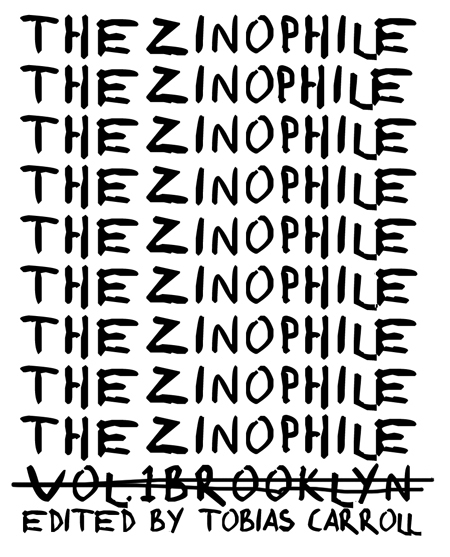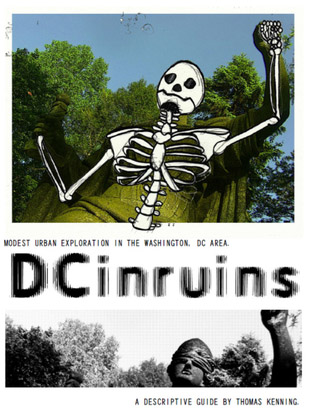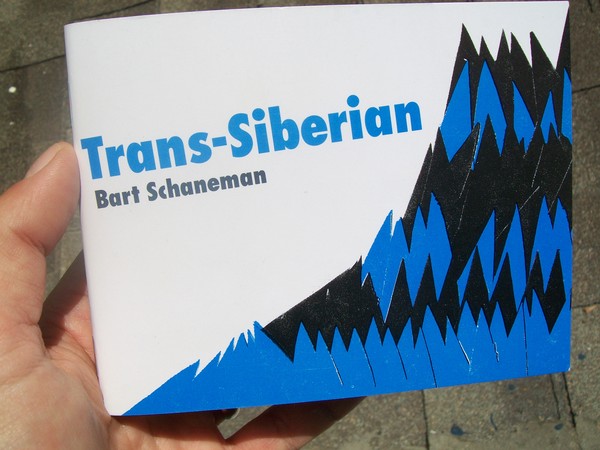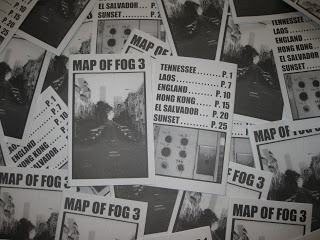
There’s something natural about a zine focusing on a place. It’s a format designed for portability in a case where portability is essential to the subject. Not every travel narrative needs to stretch to hundreds of pages; just as some excursions are planned and others are done more casually, there’s room for both approaches. In 2012, excellent work done by two friends of mine made me manifestly aware of this, and prompted me to delve further into the world of travel zines.
Nick Curley’s I Must Seduce You: Dispatches From the Former Third World documents two months that he spent living in China; there are encounters with other foreigners staying at an artists’ retreat, dodgy public restrooms, and fairly amazing t-shirt slogans, one of which lends the zine its title. (We ran an excerpt from it last year, in fact.) It’s very good — wryly funny with a number of concise observations on the cultural scene he encountered while over there.
In the fall and winter, I also received four installments of Charm Offensive, a zine put together by my friend Ami Greko to document her travels in Europe and South America. The layouts were impressively old-school: handwritten text cut and pasted atop various images (mostly pertaining to the parts of the world where Ami was staying). The whole thing provided more context, whether it was a handy guide to useful phrases or a reference to the packaging used for Chilean candy. Here, the aim wasn’t to reach a huge readership; instead, it was because that form worked far better for conveying to a small group of readers what the experience was like than a series of emails or a dedicated blog might.

That doesn’t mean that zines and blogs focusing on the same travels and explorations can’t coexist. I’m a huge fan of the long-running website Forgotten New York, which itself gave rise to a fantastic-looking book a couple of years ago. (To say nothing of Weird NJ.) In a similar vein is the blog DCinruns, billed as “modest urban exploration in the Washington, DC area.” And — that about sums it up; some of the explorations here are of abandoned buildings, including a mental hospital where adult contemporary can mysteriously be heard; others are of infrastructure. One of the highlights (for me) was a look at the remains of the precursor to the Metro, complete with stark images of run-down trestles. The tone occasionally turns outraged, especially when it comes to gentrification; that seems earned. It’s a short tour, but its blend of text and images is a balanced one; after finishing it, I’m curious to read the zines its editor has also released focusing on his time in China and Japan.

The title of Bart Schaneman’s Trans-Siberian tells you about what to expect: it’s the story of Schaneman making his way through China and Mongolia and through Russia, occasionally ruminating on his own family’s history. (It was recently released electronically via Thought Catalog.) As it opens, Schaneman is still reeling from the death of a friend, and guilt blends with his feelings of displacement as he makes his way across thousands of miles. The biography of him found in this edition of Trans-Siberian mentions a companion work, titled Where Furnaces Burn, and for all that this particular narrative feels complete, it also seems to be part of a larger story. (Looking at Schaneman’s website, it seems that the title has changed — it’ll now be Take the Ride.) His evocations of traveling — particularly by rail — are memorable: from halting encounters on trains to mistaken presumptions about the ethics of hostelkeepers. Thankfully, he doesn’t exempt himself from criticism, making for a more transparent account. And his writing about Russians driving fast could well work as an essay of its own.

And sometimes your own story takes a backseat to those of others. Reading the third issue of Map of Fog, I was reminded of K Composite, which began its life as a zine consisting of interviews with assorted residents of Louisville. The table of contents lists the interviewees by the place they’re from — El Salvador and Tennessee among them. Some, such as musician Dorothy Wang, might be known to some; others probably won’t. Yet all of them have stories to tell — and all of those stories are worth reading. Whether it’s the story of how they departed their homes or the story of what brought them to San Francisco (or, in one case, an account of laws pertaining to squatting in England), these never failed to be informative. The issue closed with a look at the buildings housing various institutions around the city, from a storefront outpost for the Church of Scientology to an imposing-looking Masonic Temple.
Along the way, I also picked up The Travel Alamanac, which Vol.1’s Jason Diamond ably covered for Flavorwire. Some of this crop of zines focused on geography; others, on personal histories. All are approaches that can yield worthwhile insights — and as I return to look at more travel zines in the future, I’m curious to see what else the form can do.
Follow Vol. 1 Brooklyn on Twitter, Facebook, Google + our Tumblr, and sign up for our mailing list.

1 comment
Thanks for picking up on my DCinruins project. I appreciate the kind words and the feedback. You’ve got a great column here full of zines I’ll have to check out.